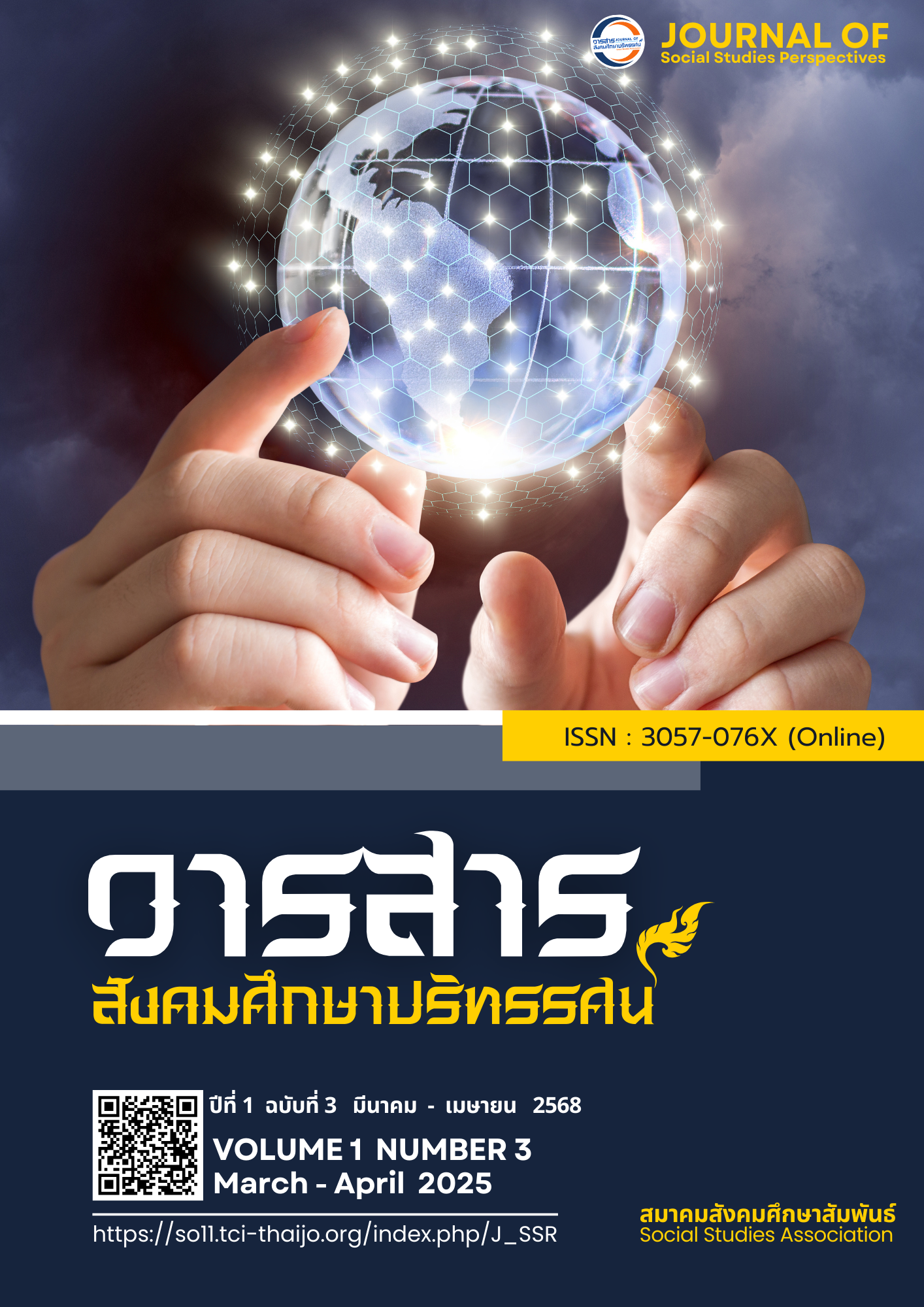WONDERFUL CHATGPT CREATING CONTENT FOR COMMUNICATION OF LEARNERS IN THE AI ERA
DOI:
https://doi.org/10.64186/jsp1290Keywords:
ChatGPT, Creating Content, Learners in the AI EraAbstract
The Artificial Intelligence (AI) technology era offers platforms that help facilitate and enhance work efficiency. ChatGPT, which stands for Chat-Generative Pre-trained Transformer, is one of the AI systems that functions as a language-based chatbot capable of communicating with humans through natural language processing. Additionally, it can assist in answering questions, generating content, writing code, and translating languages efficiently. This provides
benefits in various areas, including education, research, creativity, and customer service The use of ChatGPT also promotes convenience in personalized learning and new forms of teaching, with the ability to tailor learning to the user's needs. However, there are limitations regarding the reliability of information and ethical use. Therefore, its usage requires consideration and supervision from the user to ensure the best and most effective outcomes. This article covers the evolution, benefits, limitations of ChatGPT, compares it with other AI chatbots, and discusses the related theoretical principles for applying it in education. It outlines methods for applying the knowledge in this article, highlighting ChatGPT’s role in promoting the learning process and content creation for learners in the AI era.
References
Bamroongcheep, U. (2023). Creative Innovations for Learning Towards Digital Citizenship.
Chonburi. Chonburi Printing Press.
Boonkwan, P. (2022). Researchers: Is ChatGPT Really Scary? Points Out That It is Not as Dangerous as It Seems if One Adapts. Retrieved September 2, 2024, from https://www.springnews.co.th/digital-tech/technology/833412?fbclid=IwAR1jHBkY-ed9nTS-qhhImUzcuLUCEUqdz7wUxqOyQdq2DQ__ygsrVjU40v
Deng, J., & Lin, Y. (2023). The Benefits and Challenges of ChatGPT. An Overview.
Frontiers in Computing and Intelligent Systems, 2(2), 81-83.
https://doi:10.54097/fcis.v2i2.4465.
Digitonize. (2024). Compare the usage of famous Chatbots of 5 major companies. Retrieved
December 8, 2024, from https://www.facebook.com/Digitonizebyassetwise
Hocco. (2023). Limitations of ChatGPT: Perspectives and Precautions. Retrieved December 2,
, from https://hocco.co/th/blog/chatgpt-limitations/
John, I. (2023). The Art of Asking ChatGPT for High-Quality Answers: A Complete Guide to
Prompt Engineering Techniques. Nazunda Technologies Limited.
Muhammad, S. (2023). The use of artificial intelligence-based ChatGPT and its challenges for the world of education; from the viewpoint of the development of creative writing skills. Proceeding of International Conference on Education, Society and Humanity. (p. 360-364). Probolinggo, Indonesia.
Ministry of Education. (2024). Report on the Monitoring, Inspection, and Evaluation of the Ministry of Education's for Education Management for Round 1 of the year 2024. Bangkok. Ministry of Education.
OpenAI. (2023). Introducing ChatGPT. Retrieved December 2, 2024, from https://openai.com/
index/chatgpt/.
Partha, P., Ray. (2023). ChatGPT: A comprehensive review on background, applications,
keychallenges, bias, ethics, limitations, and future scope. Internet of Things and Cyber-Physical, 3(2023), 121-154. https://doi.org/10.1016/j.iotcps.2023.04.003.
Pekka, A., & Anttila, T., & Hakala, J., & Ketola, J. & Knappe, A., & Lahtinen, D., &
Liukko, V., & Poranen, T., & Ritala, T., & Setälä, M. (2023). ChatGPT as
a Fullstack Web Developer - Early Results. In book: Agile Processes in Software
Engineering and Extreme Programming – Workshops. (pp.201-209).
Ruby,D. (2023). Detailed ChatGPT Statistics – Users & Facts. Retrieved December 4, 2024,
from https://www.demandsage.com/chatgpt-statistics.
UNESCO. (2023). ChatGPT and artificial intelligence in higher education: quick start guide.
Retrieved December 4, 2024, from https://unesdoc.unesco.org/ark:/48223/
pf0000385146.
White,S. ,Rakkhantoh,S. and Srikruadong,S. (2021). Human Beings and Digital Citizenship. Journal of Mahachulalongkorn Rajavidyalaya University, 7(2), 345.
Downloads
Published
How to Cite
Issue
Section
Categories
License
Copyright (c) 2025 Journal of social studies perspectives

This work is licensed under a Creative Commons Attribution-NonCommercial-NoDerivatives 4.0 International License.
The article is published under the Creative Commons Attribution-NonCommercial-NoDerivatives 4.0 International (CC BY-NC-ND 4.0) license, which allows others to share the article while giving appropriate credit to the author. It prohibits the use of the article for commercial purposes or the creation of derivative works. Any other reuse or reproduction requires permission from the journal.










